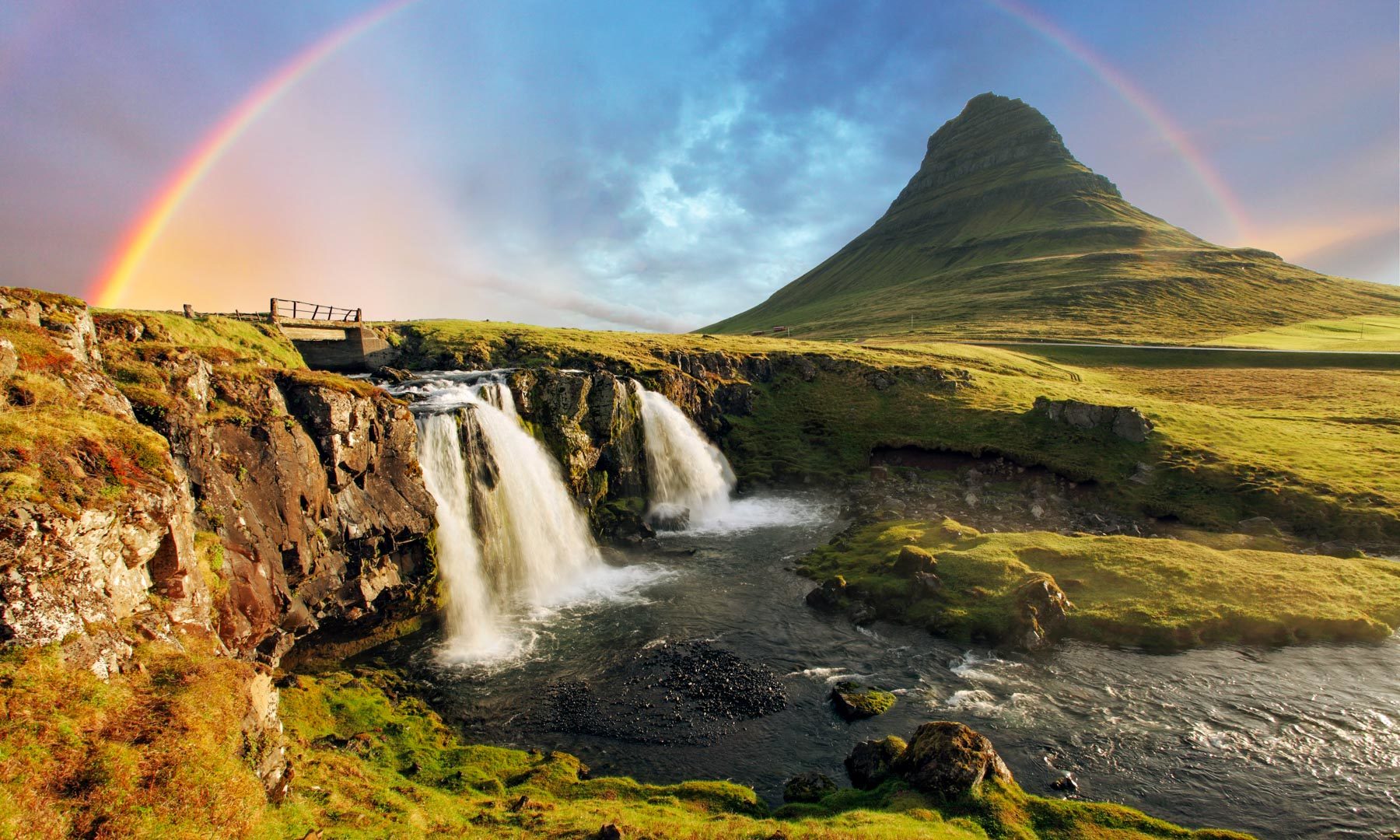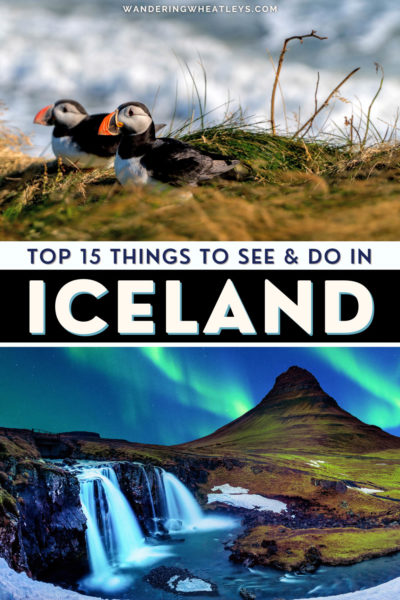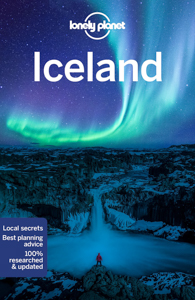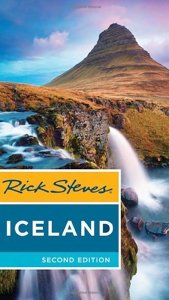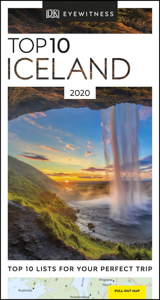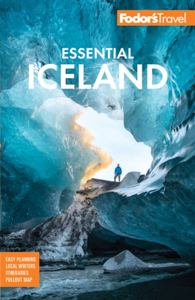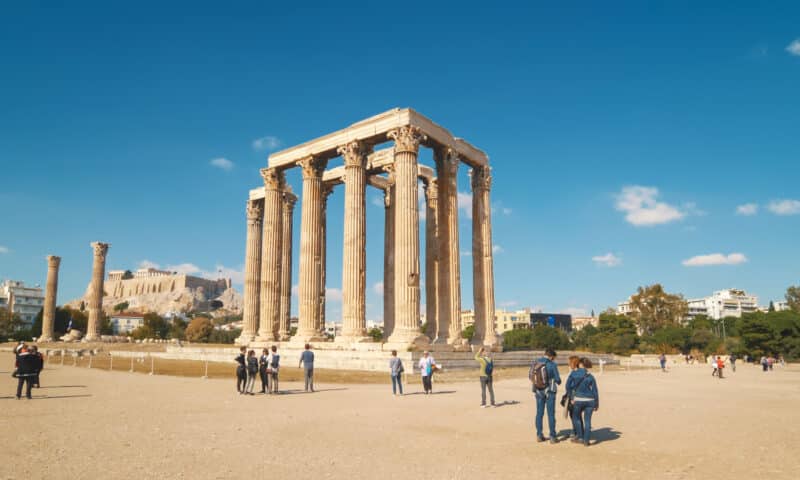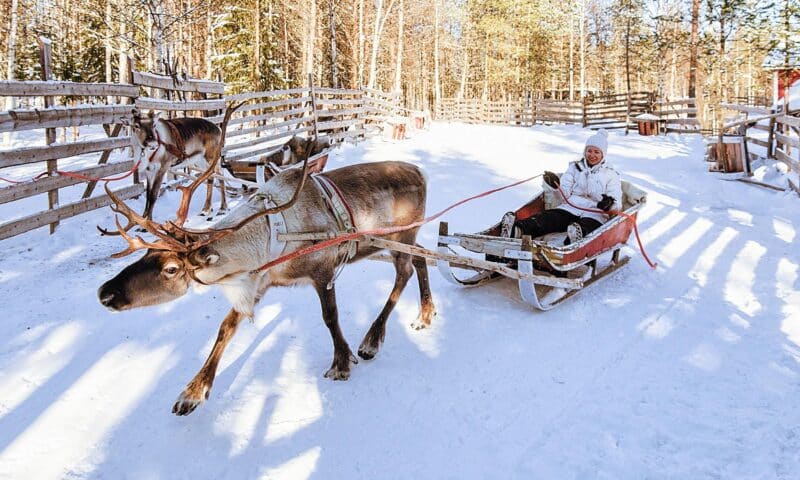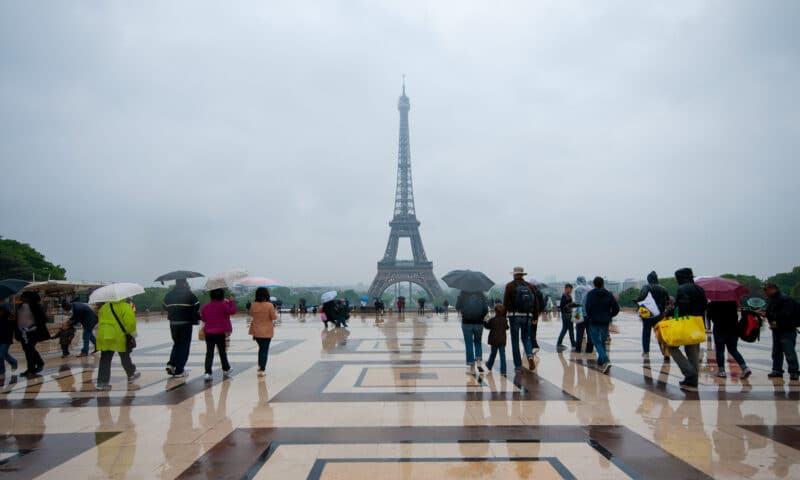There’s a reason that Iceland is known as the “Land of Fire and Ice.” This small island in the northernmost reaches of the Atlantic Ocean is like nowhere else on the planet, and even with just a few days to spend in Iceland, you can experience extremes like no other!
This is a land of lava flows, seismic activity, black sand beaches, and fiery volcanoes. But it’s also a land of glaciers, icebergs, crashing waterfalls, and fiercely unpredictable weather.
Step off the plane, and you can head straight for the thermal waters and mineral-soaked mud of the iconic Blue Lagoon. Visit Reykjavik, Iceland’s unique capital city, and you can learn about Norse sagas before exploring the waterfalls and geysers of the Golden Circle.
If you’re looking to relax, you’ll love all of the geothermal hot springs and the outdoor spa culture, but if you’re craving adventure, then you can snorkel between tectonic plates, snowmobile across ice sheets, or road trip the famous Route 1 Ring Road.
Factor in the chance to see the Northern Lights in the winter or experience the Midnight Sun in the summer, and you’ll quickly understand why Iceland is such a unique European destination!
With so many fun and fascinating things to see and do in Iceland, you might not know where to begin. That’s why we’ve compiled our list of the best things to do in Iceland for you. Give these unique Iceland bucket list recommendations a try, and there’s no doubt you’ll have an incredible time exploring the Land of Fire and Ice!
Don’t forget to check out our web story: The 15 Best Things to do in Iceland
Disclaimer: This post may contain affiliate links. If you make a purchase or booking through one of our links we may earn a small commission (don’t worry, it’s at no extra cost to you).
15 Things to do in Iceland
1. Road Trip Iceland’s Famous Route 1 Ring Road
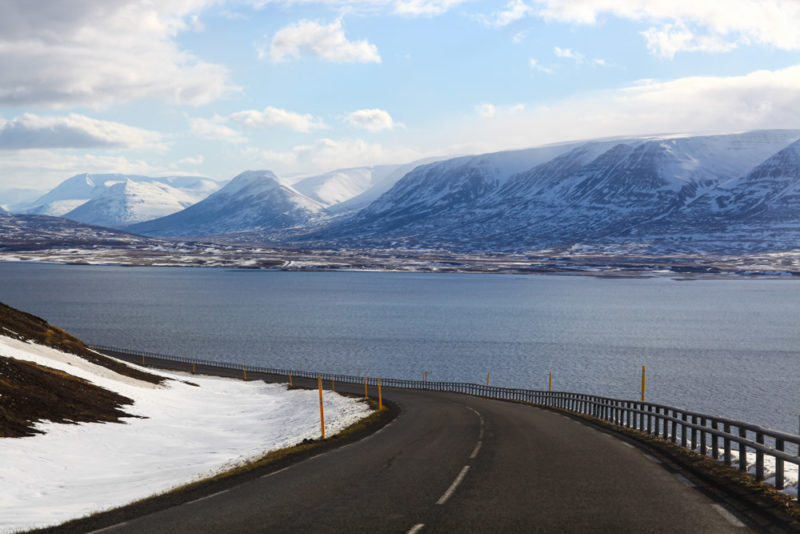
If you love an exciting road trip, then you’ve come to the right country! Iceland is made for road tripping, and with so much distance to travel and remoteness to explore, you better buckle up and get your car rental booked.
Outside of Reykjavik, a vehicle is essential for getting around, so we recommend planning a full-on road trip itinerary to make the most of your time in Iceland. The most iconic road trip route is simply known as Route 1, or the Ring Road, and it’s one of the best things to do in Iceland.
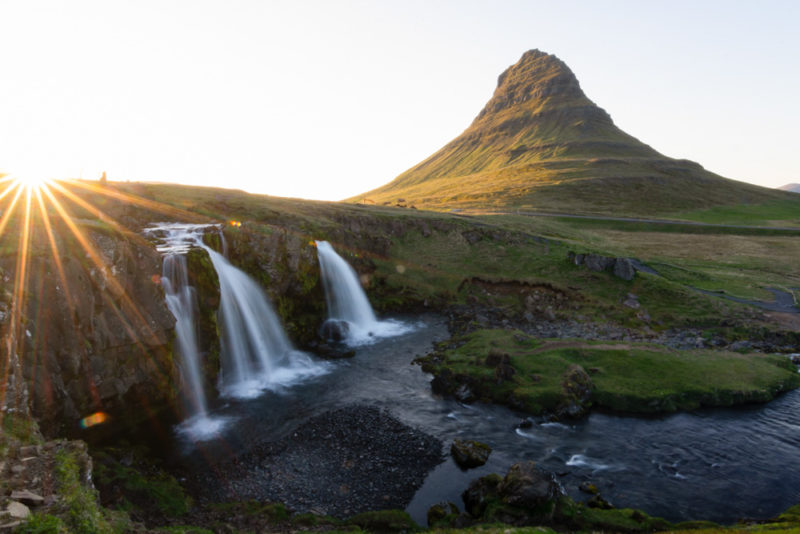
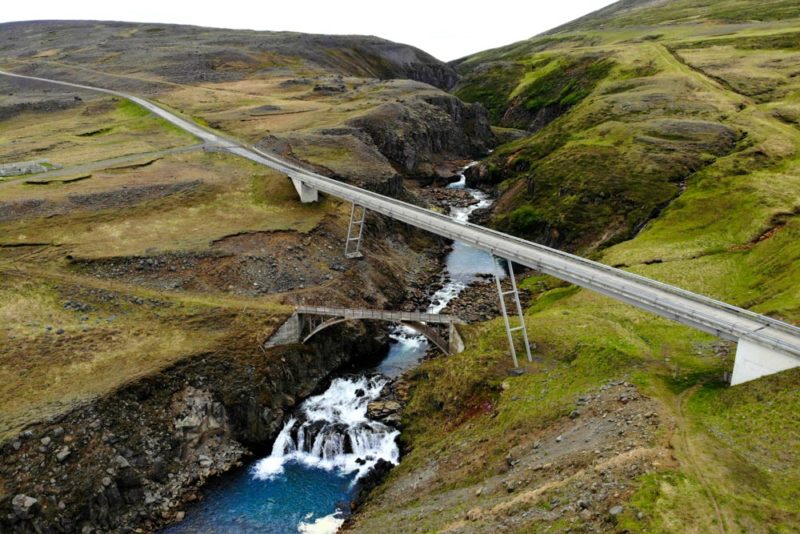
Route 1 is the main highway that circles Iceland. However, don’t expect anything more than a two-lane road outside of the capital. Route 1 is the road that links almost all of Iceland’s major towns, starting in Reykjavik and then heading all the way around the coast for roughly 800 miles before ending back in the capital.
We recommend taking at least a week to fully enjoy the journey. Highlights include the black sand beaches and waterfalls by Vik, the glacial lagoons and fjords on the east coast, the northern capital of Akureyri, and the remote wilderness of the west.
Seriously, there’s so much to do on Route 1 that you’ll want as much time as possible, particularly when you start taking detours to isolated waterfalls and glaciers off the highway.
Iceland’s weather is fierce, and if you’re not used to snow and ice, then stick to the long summer days to make the journey. Even in the shoulder season – in either spring or autumn – the main highway can be closed with short notice due to snowfall, so always follow the diversionary signs if you see them!
2. Check Out Geysers and Waterfalls in the Golden Circle
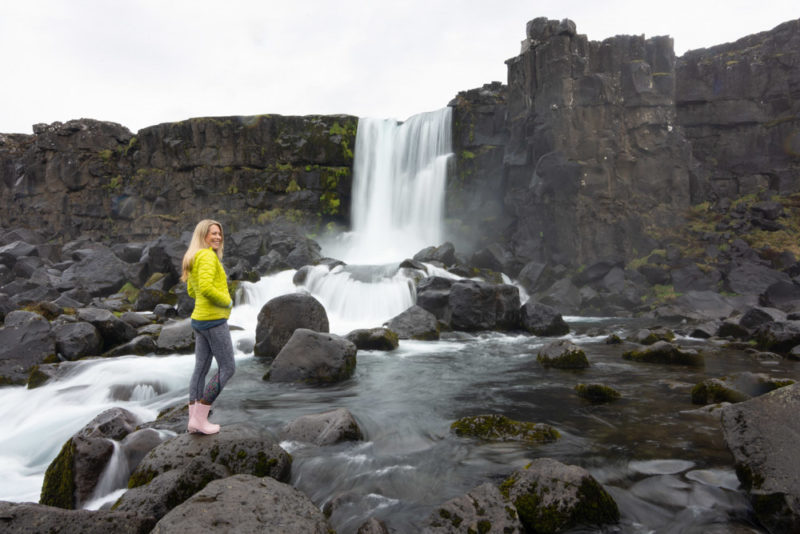
One of the top things to see in Iceland is the Golden Circle, where geysers and waterfalls await you in the countryside just outside of Reykjavik. In fact, the fabled Golden Circle is one of the best Iceland attractions to visit if you’re in a rush or just have a short stopover in the capital because this trio of spectacular sights is the nation in a microcosm!
You’ll need a whole day to visit the Golden Circle, which starts in Thingvellir National Park, less than an hour’s drive east of Reykjavik. Thingvellir National Park is where the European tectonic plate slowly separates from the North American tectonic plate. This beautiful landscape is also where Icelanders held their annual Althing (national parliament) from 930 AD until 1798 AD.
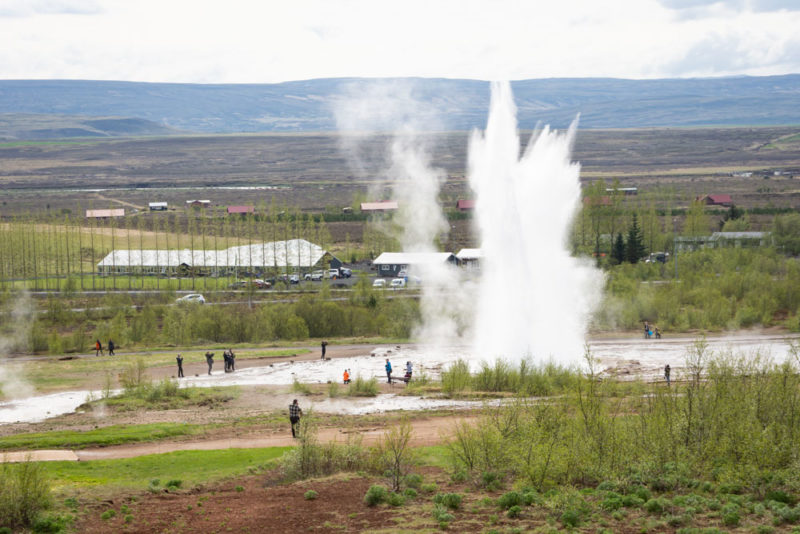
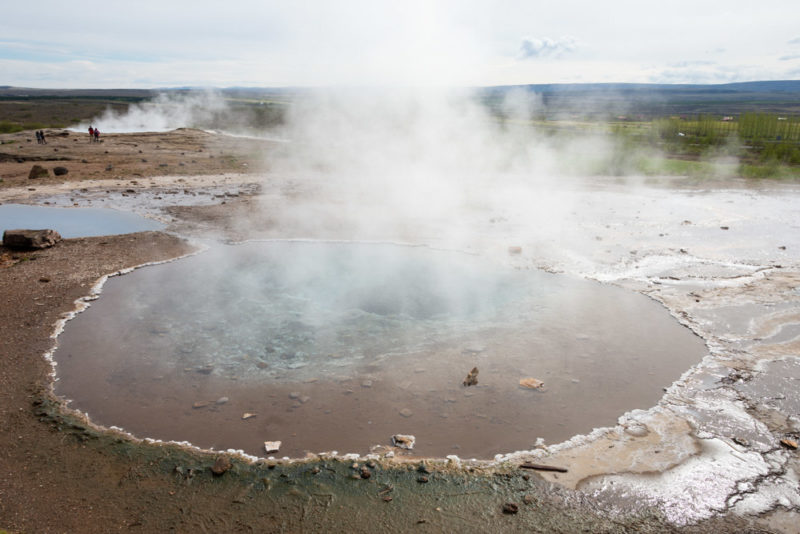
From Thingvellir National Park, you travel further east to the Haukadalur geothermal area, where you can see the full force of Iceland’s geothermal power in action. Here you’ll find Strokkur and the Great Geyser, two enormous geysers that have been erupting for hundreds of years!
The last stop on the Golden Circle route is Gullfoss, or the Golden Falls, where you’ll be awed by the sheer power and natural beauty of one of the best sights in Iceland. Gullfoss stands 32 meters high, and, in summer, the fresh snowmelt gives the waterfall an unstoppable force. In the winter, Gullfoss is an ethereal winter wonderland, covered in snow and ice and frozen in time.
3. Snorkel Between Tectonic Plates
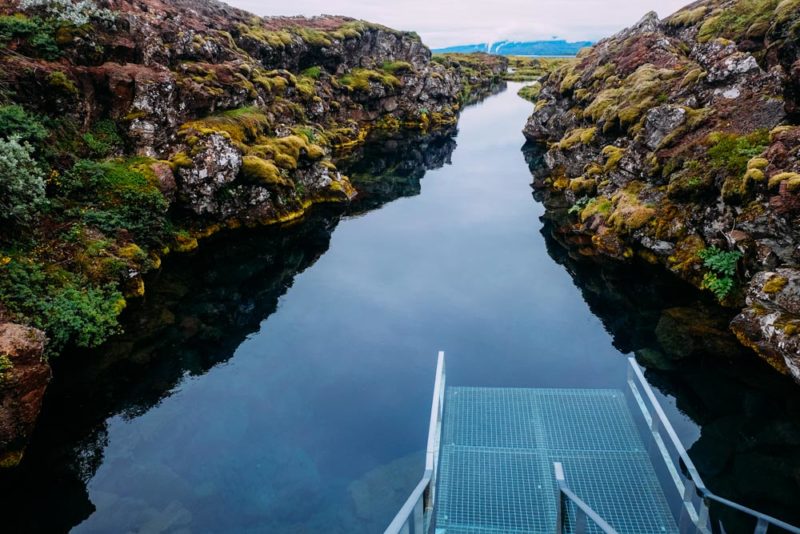
Yes, you did read that right. In Iceland, you can snorkel between tectonic plates! This is one of the most unique things to do in Iceland because there’s almost nowhere else in the world where this can be done.
Iceland is caught between the North American and European tectonic plates, and the two plates are slowly separating each and every year. This divide can be seen at Thingvellir National Park, where the two plates have created a great rift in the rocks. This rift is known as the Silfra Fissure, and it’s filled with pure Icelandic glacial water.
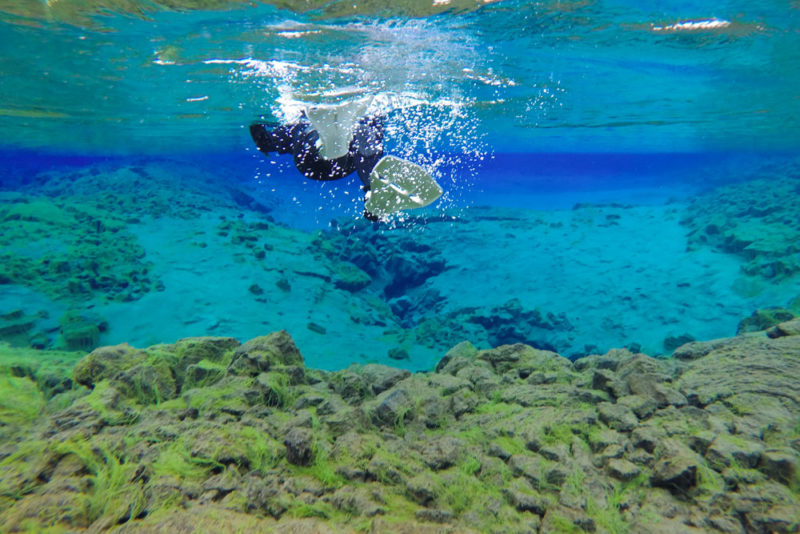
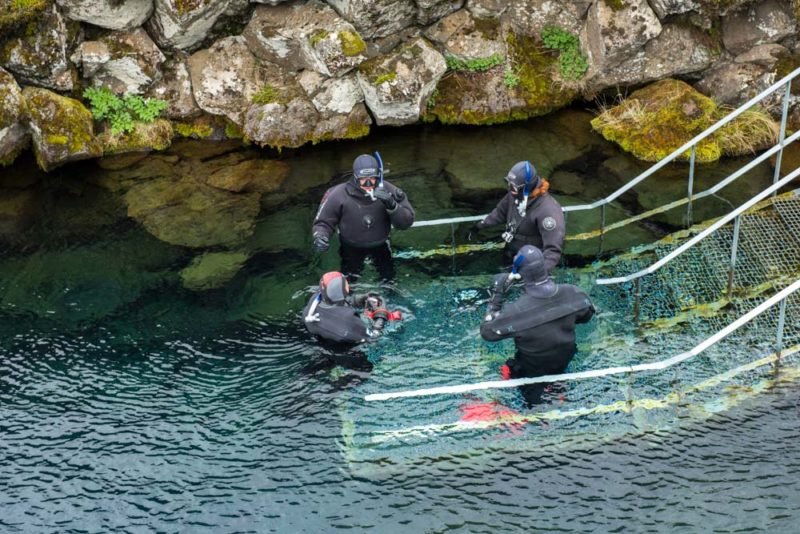
You can don a dry suit, fins, and a snorkel and head on an underwater tour through the Silfra Fissure. Visibility is crystal clear, and while there’s no marine life here, you’ll be amazed by the rock formations and mesmerizing colors below the water.
Silfra is remarkably deep in places, and if you’re a keen scuba diver, you can gear up and dive even deeper between the two tectonic plates. Yes, it’s going to be cold, but this is one of the coolest experiences you can have during your trip to Iceland!
4. Take a Tour through Reykjavik’s Museums
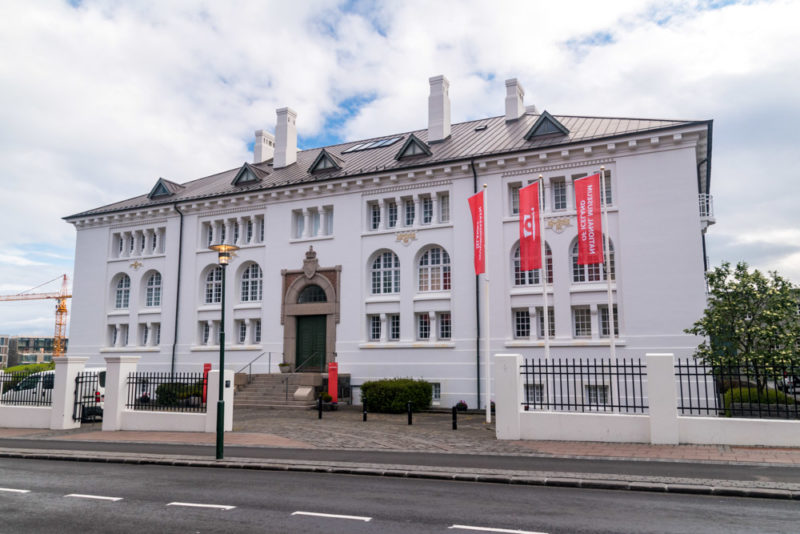
Iceland is best known for its natural scenery, but in Reykjavik, you can delve deeper into the country’s history and culture than you’ll ever see on the surface.
The Icelandic capital is packed full of museums, and you can spend days unearthing hidden treasures from the past and present across the city. The Reykjavik City Card even offers you unlimited access to many of the best museums in the capital, as well as unlimited bus travel between them.
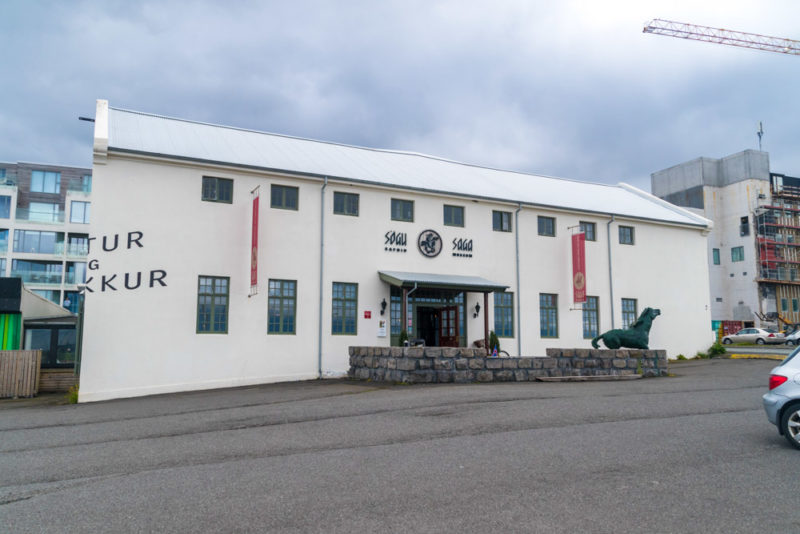
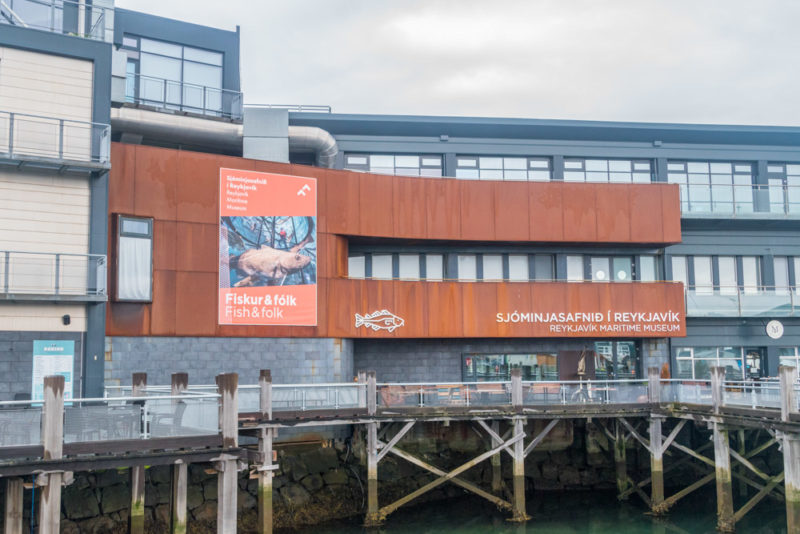
Start at the National Museum of Iceland, where you’ll be taken on a journey through Icelandic history, from the Norse settlement to the present. At the Settlement Museum, you can see the excavated remains of a Norse longhouse dating to the 9th century AD, while at the Saga Museum, you can jump into Nordic folklore and history.
Wildlife lovers will want to visit the excellent Whales of Iceland exhibition in the Old Harbor, where you can learn all about Icelandic whales, while the nearby Reykjavik Maritime Museum tells the story of Iceland’s long relationship with the Atlantic Ocean.
You’ll also find a few niche museums in Reykjavik, including the offbeat Icelandic Punk Museum, which offers an insight into the country’s love of punk music. Even more unique than this is the Icelandic Phallological Museum, a museum dedicated to the male member!
5. Visit an Active Volcano
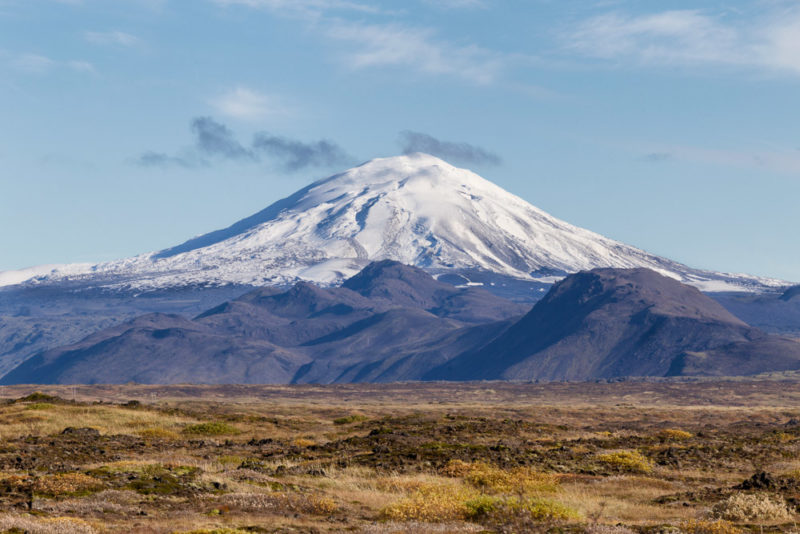
Iceland isn’t called the Land of Fire and Ice for any old reason, and you should definitely experience the fiery side of the country with a visit to an active volcano!
The Icelandic landscape is shaped by volcanic activity, and you never quite know when the next volcano is going to erupt. You may recall the eruption of Eyjafjallajokull back in 2010, which shut down European air traffic for a brief period of time.
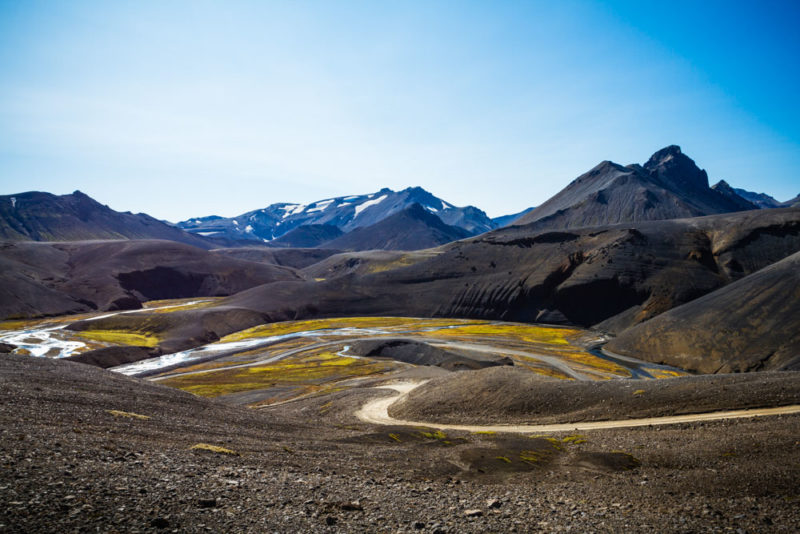
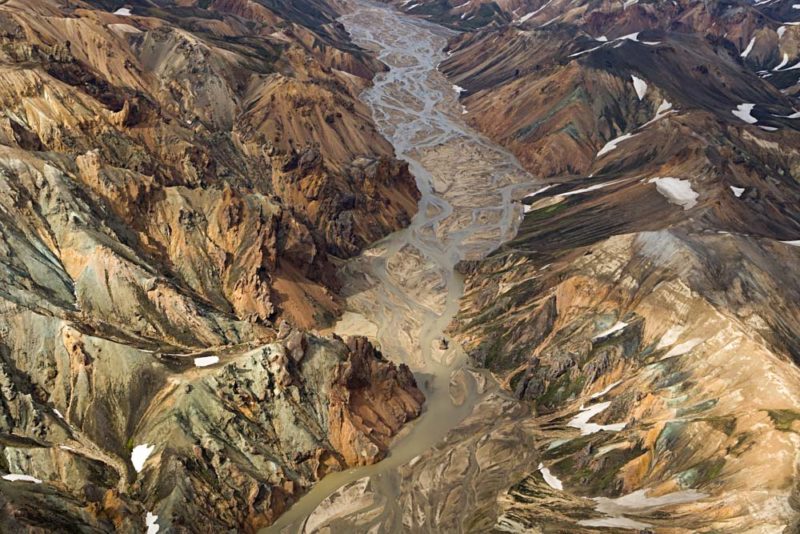
You can see the volcano from the Ring Road as you head southeast. Plus, there’s a small visitor’s center where you can see the scale of past eruptions and the damage caused.
Iceland’s last large eruption was in March 2021, when the Fagradalsfjall volcano began erupting on the Reykjanes Peninsula. This is an area of huge geothermal activity, and it’s also right next to the international airport. The eruption created a large lava field that you can visit, and it’s quickly become one of the top things to do in Iceland!
6. Hike Across a Glacier
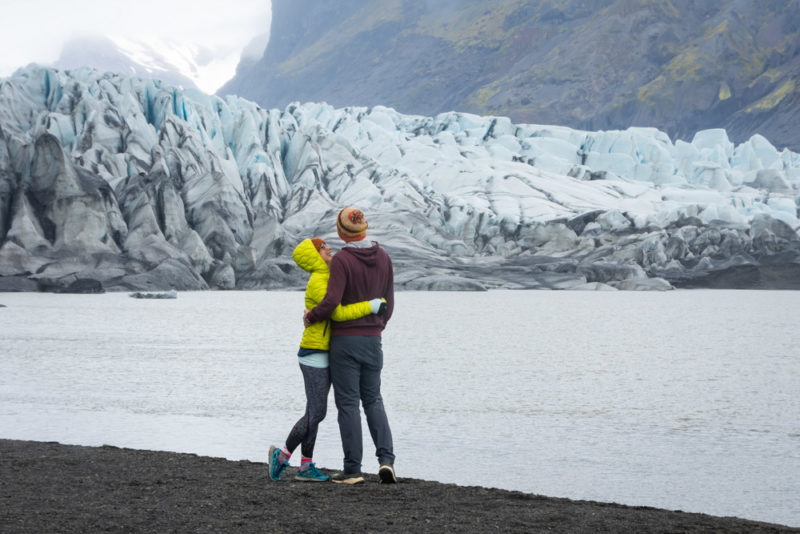
You can experience the icier side of Iceland with a visit to Vatnajokull National Park, where you’ll find the largest ice cap in the country. In fact, this is the second-largest ice cap in Europe, and it takes up as much as 8% of Iceland’s landmass.
That’s a lot of glacier to see. One of the best ways to experience the ice cap (or a small part of it, at least) is by joining a guided hiking tour. You’ll be hiking across glaciers and icy landscapes as you tackle one of the best things to do in Iceland!
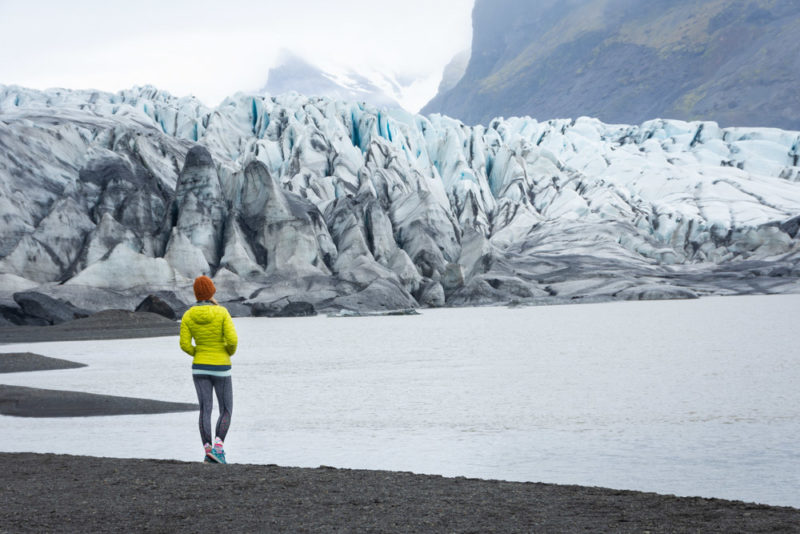
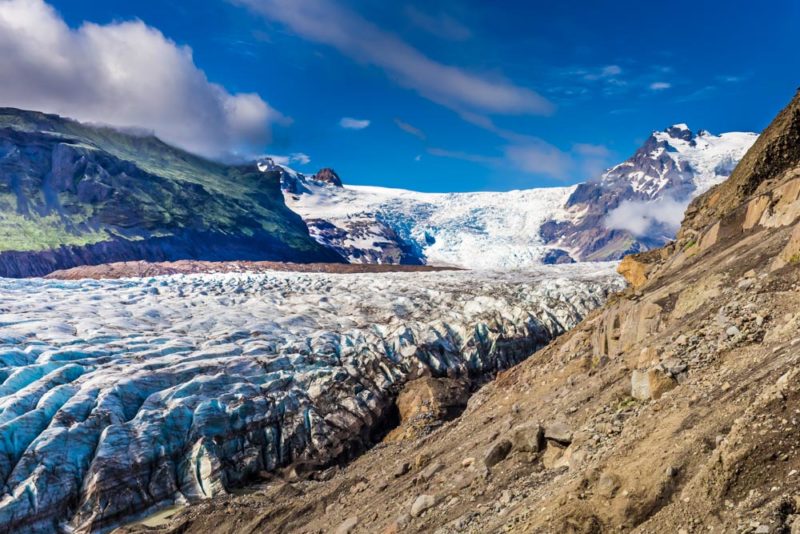
Vatnajokull National Park is an icy adventure playground. In addition to hiking, you can try ice climbing, explore lava tunnels, or join a snowmobile or 4×4 tour across the icy, icy tundra.
7. Do Go Chasing Waterfalls
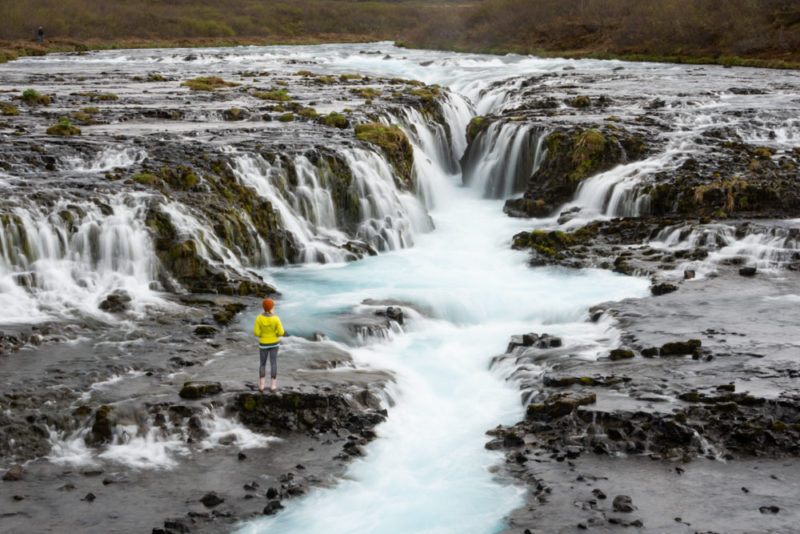
Waterfalls! We’re pretty sure you’ve seen the photos on Instagram because Iceland is renowned for its tumultuous waterfalls and crashing natural water features. There are waterfalls waiting around every turn of the road. Plus, some of the best are so close to the highway that you can see them in all their glory without having to ever leave your rental car.
There are upwards of 200 waterfalls peppered across the country, but that’s only counting the larger waterfalls that have actually been named. You’ll quickly realize that Icelandic waterfalls have been forged on a far grander scale than elsewhere in Europe!
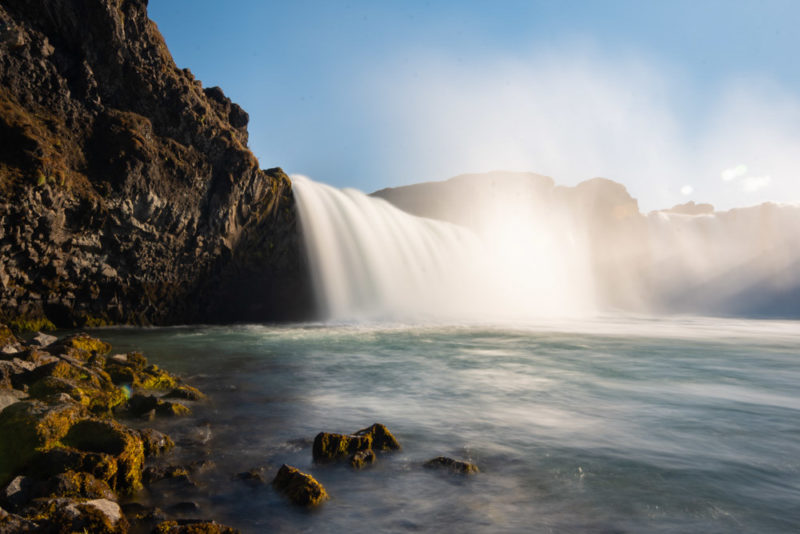
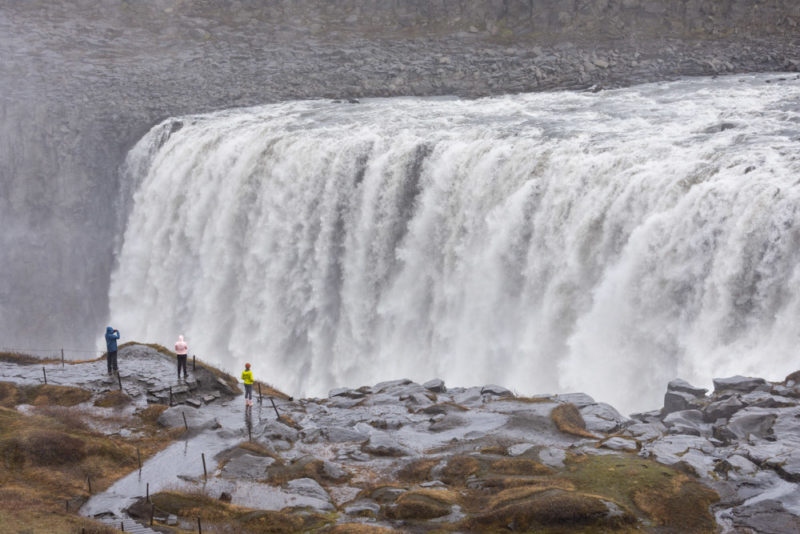
Just outside Reykjavik, you’ll find Gullfoss (or Golden Falls), which should be at the top of any Iceland bucket list. Head to the black sand beaches of the southwest coast, and you can visit Skogafoss and Seljalandfoss.
Keep going east, and there’s Svartifoss. Head way up north, and you’ll find Godafoss (or the Waterfall of the Gods).
Close to Godafoss is Dettifoss, which with a width of 328 feet (100 meters), is the most powerful waterfall in Iceland. The tallest, though, is Morsafoss, which at a height of 787 feet (240 meters) is going to leave you stunned.
8. Spot Adorable Puffins in Vestmannaeyjar
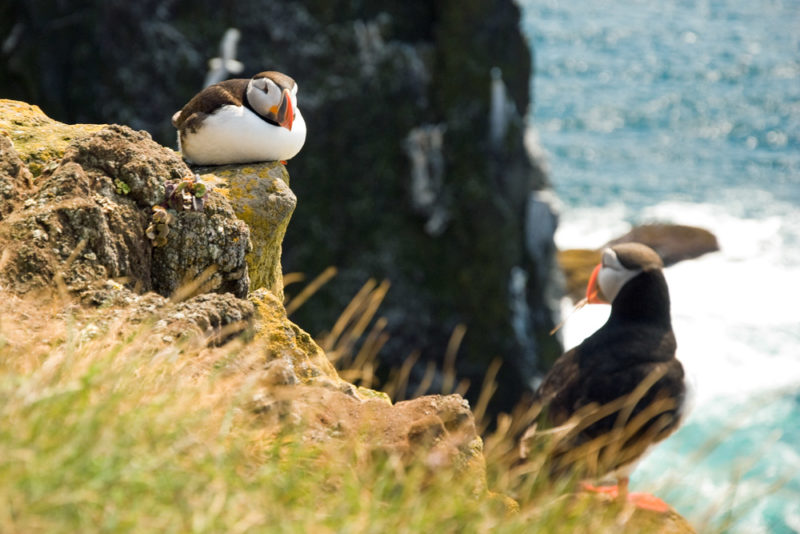
If you’re visiting Iceland between April and August, then you’re just in time to spot the puffins in Vestmannaeyjar. This small archipelago off the southeastern coast of Iceland is home to 15 islands and around 4,000 people. From spring through summer, Vestmannaeyjar is also home to upwards of a million birds – and puffins make up the majority!
The puffins head to Vestmannaeyjar – also known in English as the Westman Islands – from April onwards in order to breed, which explains why there are so many of them on the islands.
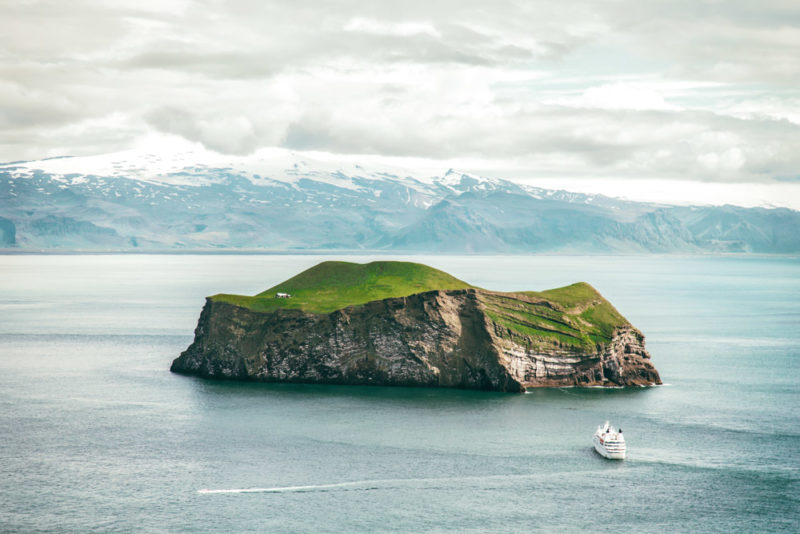
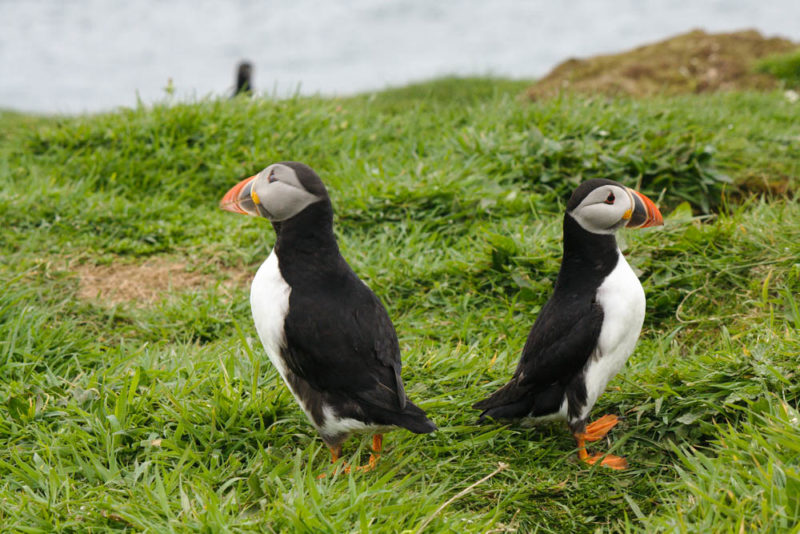
A trip to Vestmannaeyjar is one of the must-do things in Iceland because you’ll not only find one of the largest populations of Atlantic puffins in the world but you’ll be awed by the rugged and remote beauty of the islands.
Many of the islands are uninhabited, but you can catch a ferry from the mainland to the island of Heimaey, where you can spend a few days puffin-spotting, hiking, and enjoying the isolated surroundings.
9. Ride a Boat through a Glacial Lagoon
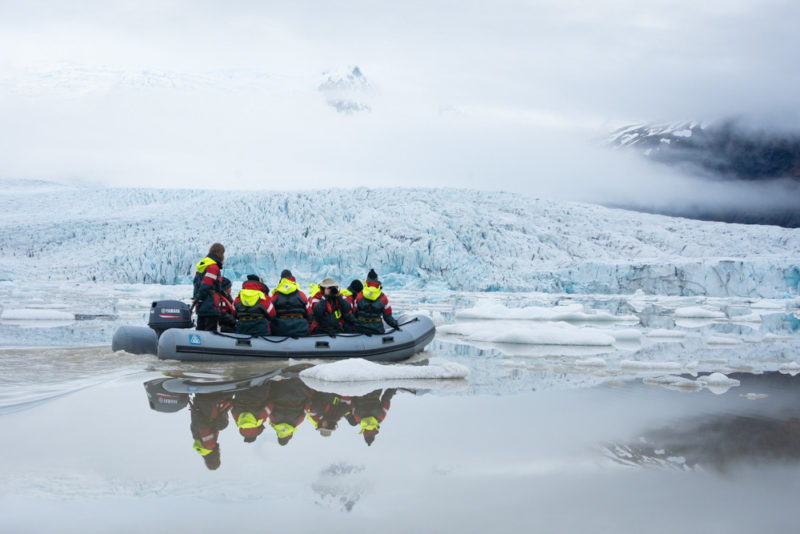
Riding a boat through a glacial lagoon is one of the coolest things to do in Iceland. We think it’s an experience that should be at the top of everyone’s Iceland bucket list!
You can make this unique experience a reality by visiting Iceland’s east coast, where you’ll find the otherworldly sight of Jokulsarlon. In this glacial lagoon, you can see large chunks of ice split off from the Vatnajokull Glacier and then journey downriver toward the Atlantic Ocean. The ice is trapped in the lagoon before it escapes into the sea, creating an unusual natural attraction.
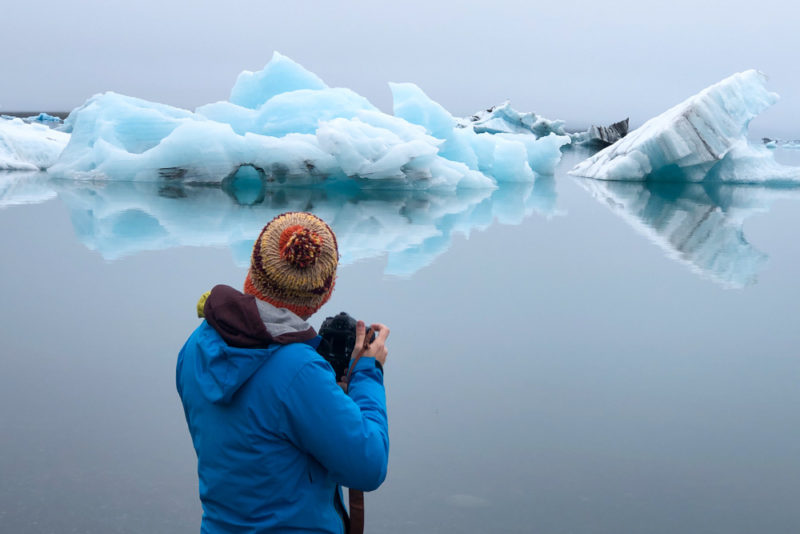
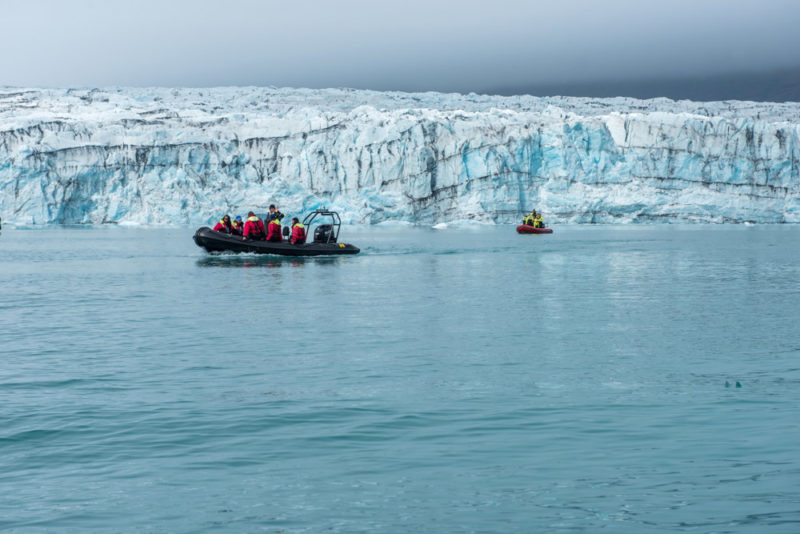
You can join a boat tour of the lagoon to get up close with the icebergs. You’ll be awed by the number of icebergs and the sheer size and beauty of them. The area is also a haven for wildlife. You can spot everything from seals to puffins as you tour through the glacial lagoon.
10. Go Whale Watching in Husavik
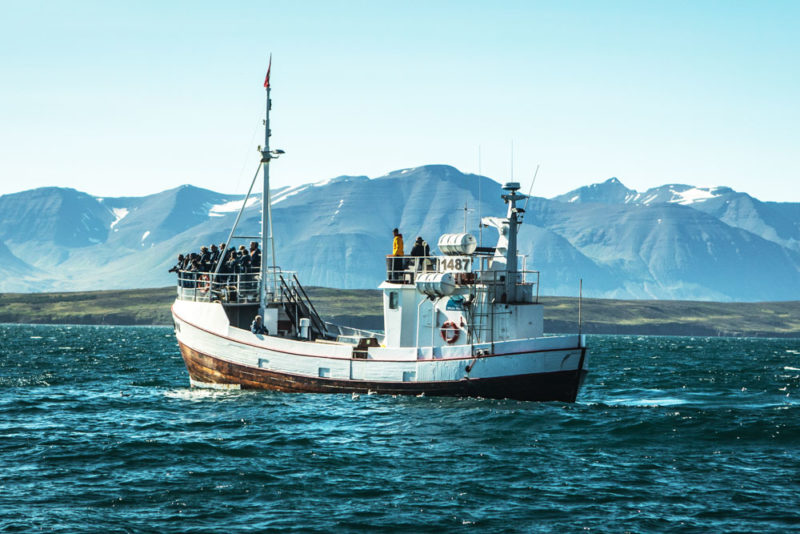
Are you hoping to see whales during your stay in Iceland? Then travel to Husavik, in the far north of the country, where you’ll find Iceland’s whale watching capital.
Husavik sits on Iceland’s northern coastline, and the small town is just 25 miles south of the Arctic Circle. In whale watching season, which runs from around April to October, the bay teems with marine life.
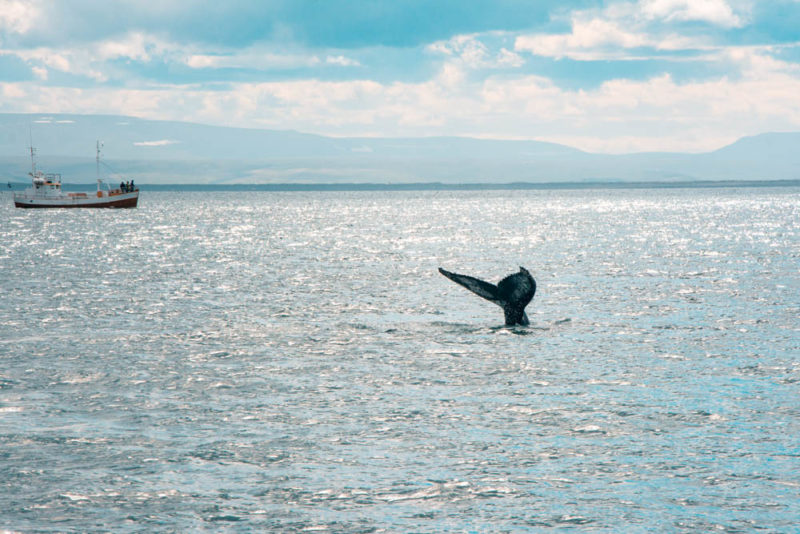
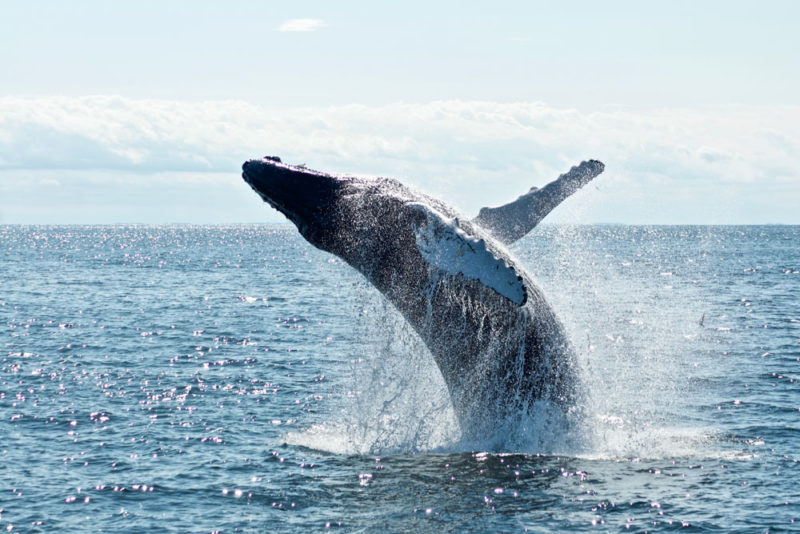
Husavik was once the whale hunting capital of Iceland, but things have changed. Today, the old whale meat slaughterhouse is a museum. Rather than hunting whales, the locals are here to guide tourists through the icy seas to spot these beautiful creatures in their natural habitat.
Join a whale watching tour, and the chances are high that you’ll spot at least one species of whale or dolphin, if not more. Porpoise, orcas, minke whales, sperm whales, and even the mighty blue whale make their way into the bay in search of food during the warmer months of the year, so there’s no better spot to whale watch than Husavik!
11. Explore Lava Fields at Lake Myvatn
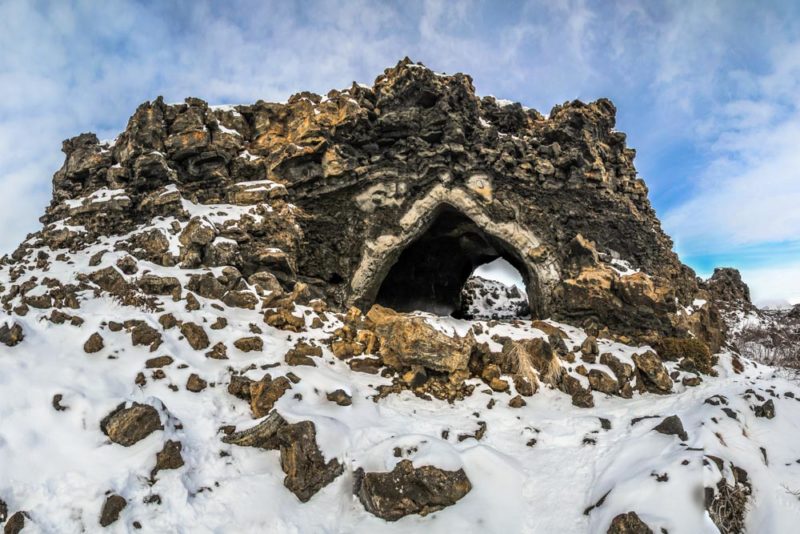
One of the most beautiful places to visit in Iceland is Lake Myvatn, which you’ll find in the far north of the country, just to the east of the northern capital of Akureyri. Lake Myvatn has everything you could ever want to see and do in Iceland, including active volcanoes, dormant volcanoes, lava fields, geothermal hot springs, and more.
Lake Myvatn is a vast area of wetlands, and in the summer, it’s a popular place for bird watching. Rare species flock here in the warmer months of the year, and many are found on the unique, volcanic islands in the middle of the lake.
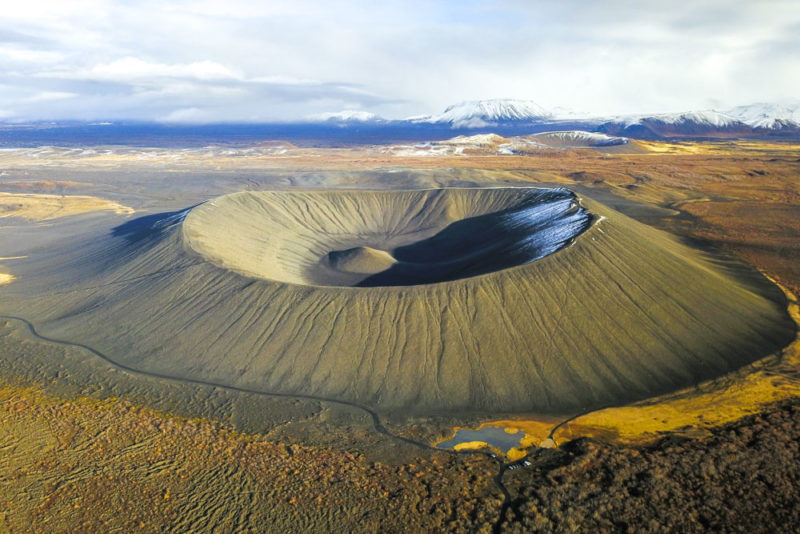
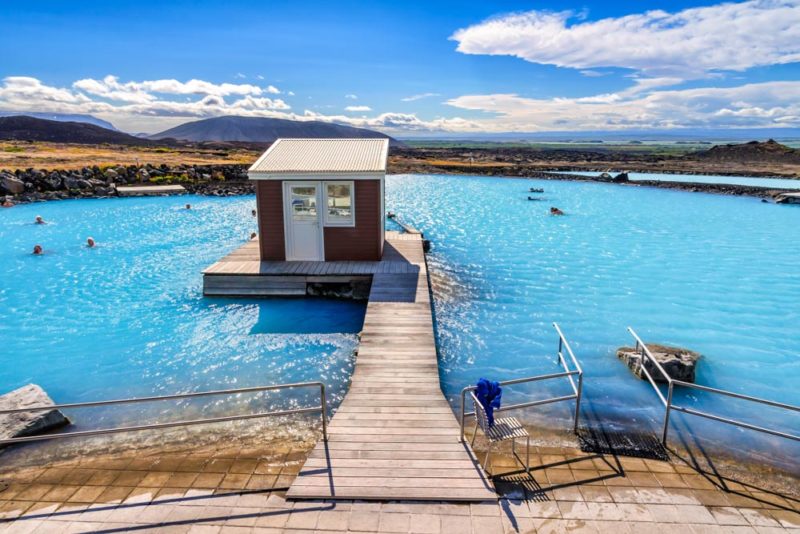
The lake itself is ringed by volcanoes, some of which are very much active. One of the most popular volcanoes to visit is the Hverfell Crater, the summit of which can be reached via hiking trails from the lake below. In the shadow of Hverfell, you’ll find the Dimmuborgir Lava Field, a place of unique, lava-rock formations that’s said to be home to trolls and other legendary creatures from Icelandic folklore!
After a long day of sightseeing, you can spend your evening at the Myvatn Nature Baths. This geothermal lagoon is one of the best things to do in Iceland. You can sit back in the warm water, soak up the minerals, and enjoy a spectacular view of the volcanoes around you.
12. Chase the Northern lights
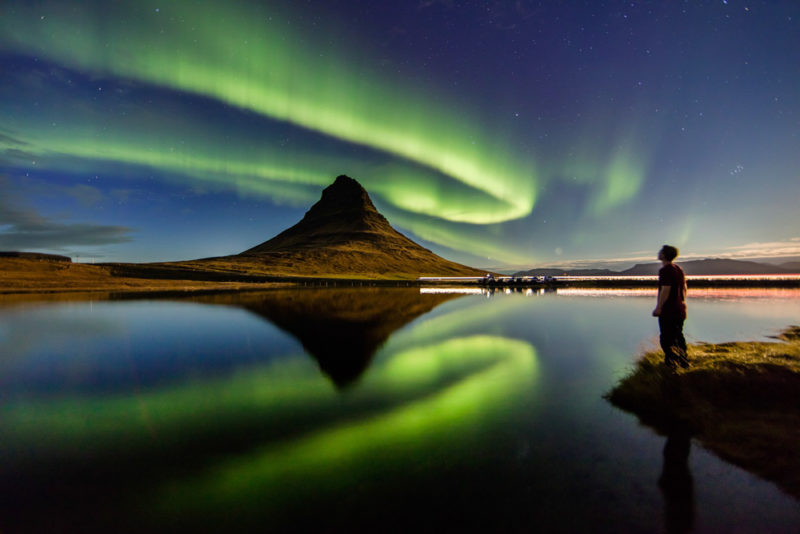
If you’re visiting Iceland in the winter, you’ll have a huge chance of seeing the Northern Lights! This natural light phenomenon is at the very top of many travel bucket lists, and Iceland is one of the best places in the world to tick it off.
The Northern Lights – or Aurora Borealis – is a spectacular nighttime light show, and it’s caused by solar particles colliding with the earth’s magnetic fields. When the skies are dark and clear, then the Northern Lights will make their appearance.
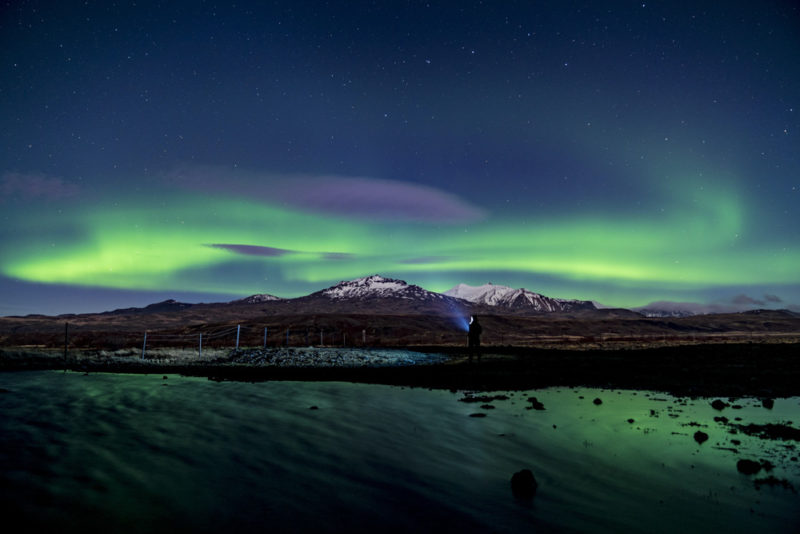
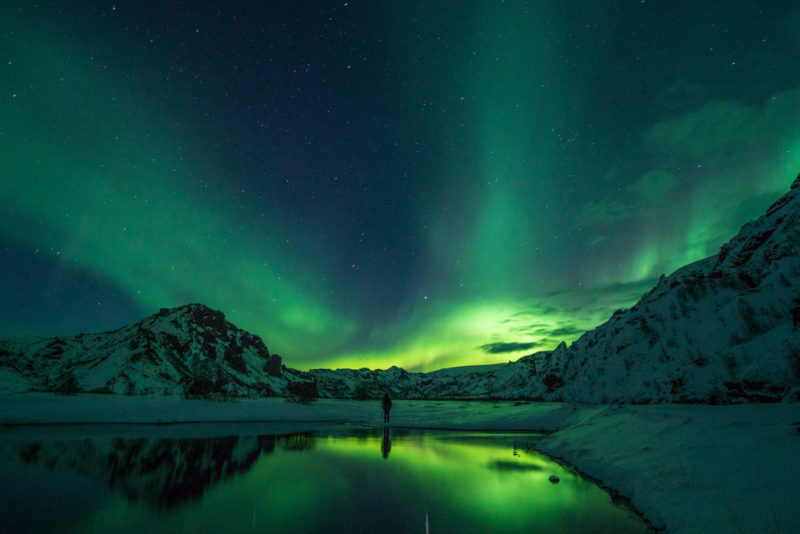
You can maximize your chance of seeing the Northern Lights by visiting Iceland in the winter. Although you may see them anytime between September and March if the conditions are just right.
You can spot the lights almost anywhere in Iceland, although the best conditions are always found in the wilderness. Rent a cabin in the countryside, sit back in a hot tub, and wait for the light show to appear above you. Or, join a Northern Lights tour in Reykjavik, and chase the Aurora Borealis on an off-road expedition through the tundra.
13. Enjoy the Midnight Sun
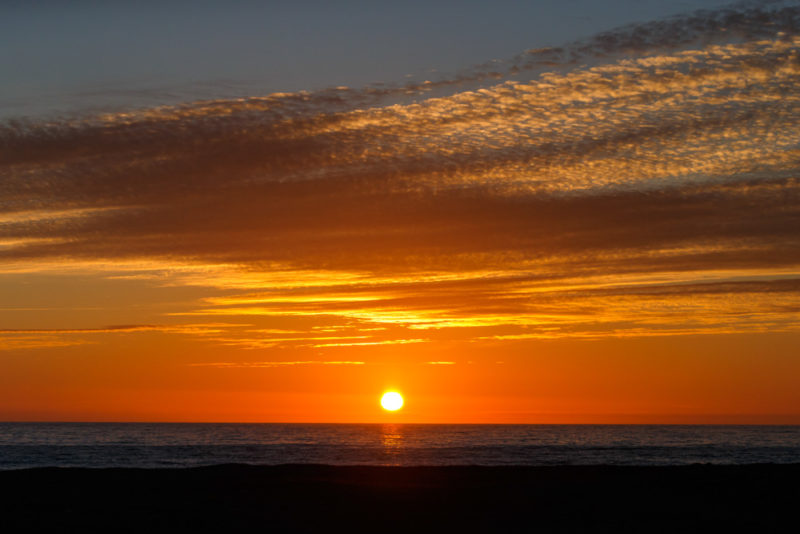
Iceland is a land of phenomena, and one of the most unique experiences to enjoy is the Midnight Sun!
Iceland’s summers are outrageously short, but as with everything in Iceland, the seasons are extreme. During the height of summer, the sun rarely sets, and you can stand under the Midnight Sun in June, July, and August.
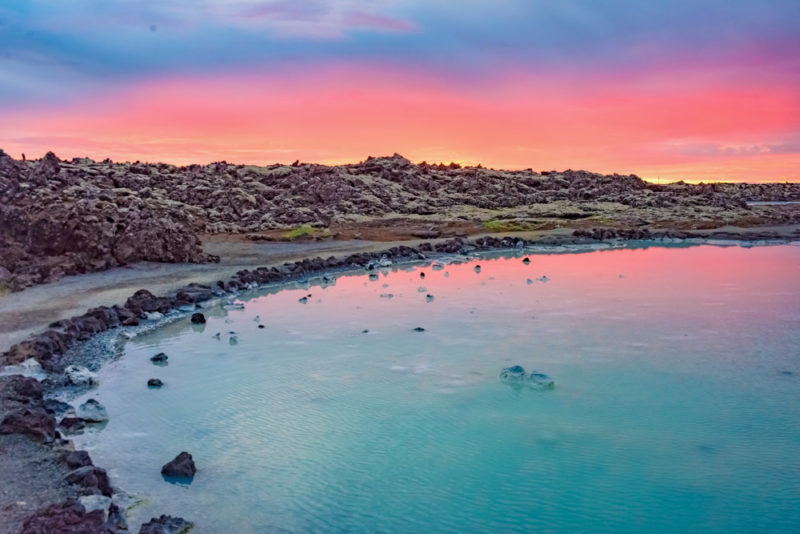
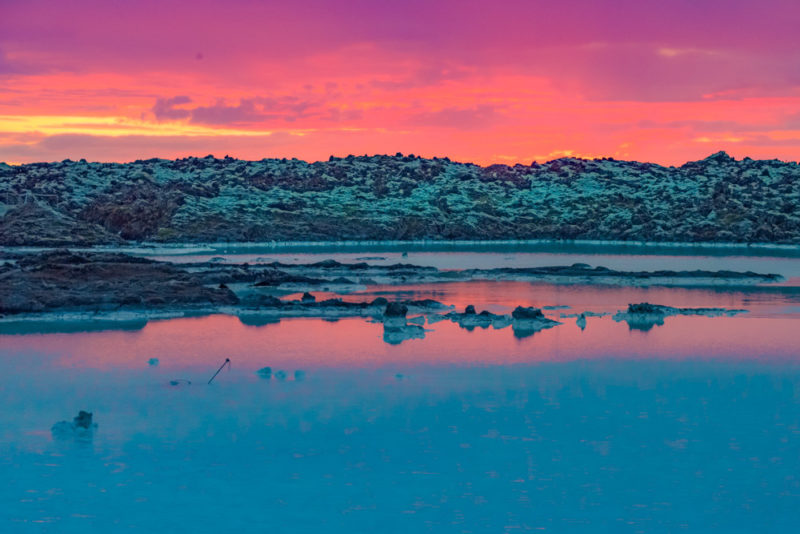
Around the summer solstice, Iceland even experiences 24 hours of constant daylight! That means you can go for a swim at midnight, stay out hiking on glaciers late until the morning, or drink beers in full daylight long into the evening.
The Midnight Sun, like most things in Iceland, is unique, and it’s one of the best reasons to visit the country during the peak summer season.
14. Try Iceland’s Most Unique Cuisine
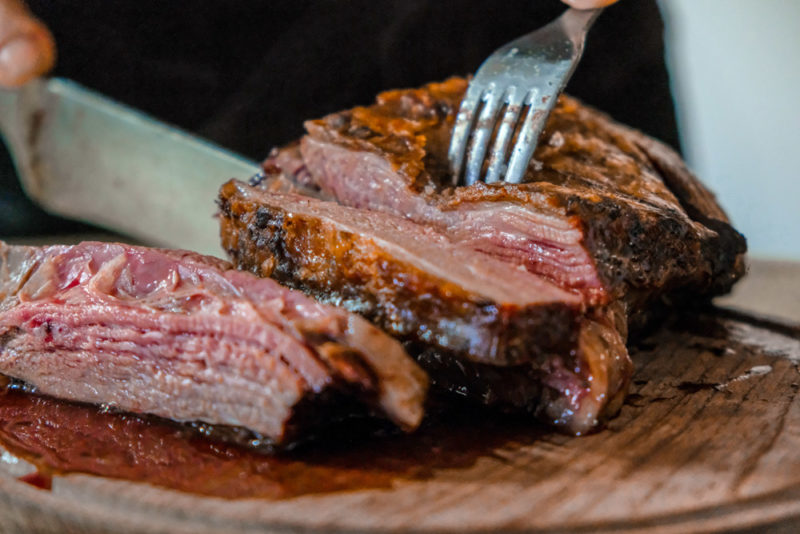
Iceland has a unique culinary scene. While you’re busy exploring waterfalls and glaciers, take the time to try a few of the local dishes.
As you might expect from a land covered in ice, Icelandic cuisine revolves around meat and fish. Slow roasted lamb and hearty lamb soup are two Icelandic favorite, while you’ll find cod, halibut, monkfish, and many more fish species on menus across the country.

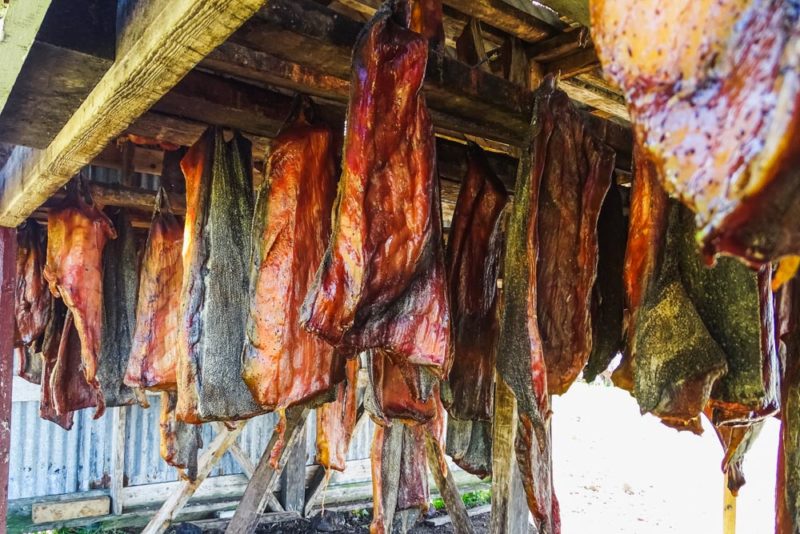
Other unique dishes to try include geothermally baked bread, which you’ll find in the Golden Circle, as well as skyr, a protein-rich yogurt that’s an excellent way to start the day. If you’re feeling particularly adventurous, then the fermented shark is a strong, powerful, and exceptionally unusual local dish to give a try!
15. Bathe in Geothermal Hot Springs
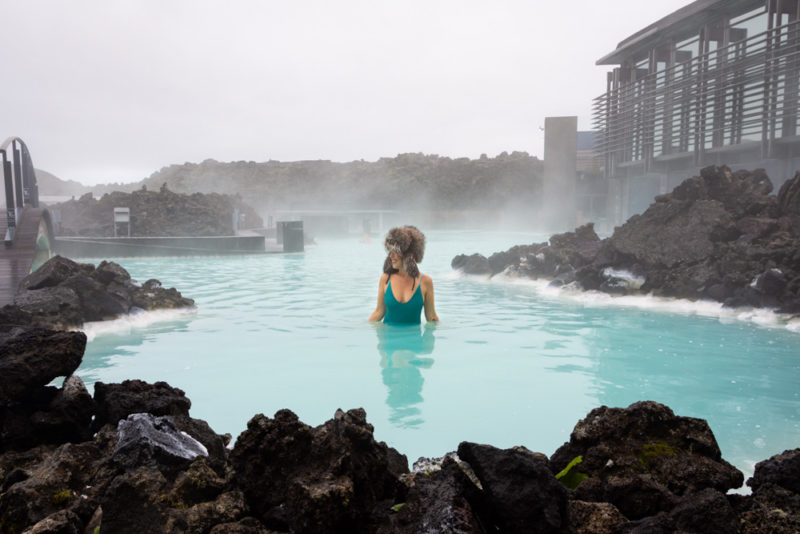
Bathing in geothermal hot springs is one of the coolest things to do in Iceland, and no trip to the Land of Fire and Ice is ever complete without a quick dip! Iceland’s bathing culture is strong. You’ll find that outdoor hot springs are busy all through the year, no matter what the weather is like.
Reykjavik is home to countless public swimming pools, which are all heated using the geothermal energy waiting below the surface (of which Iceland has an abundance!). You’ll also find that many hotels and Airbnbs have geothermally heated spa areas and outdoor hot tubs.
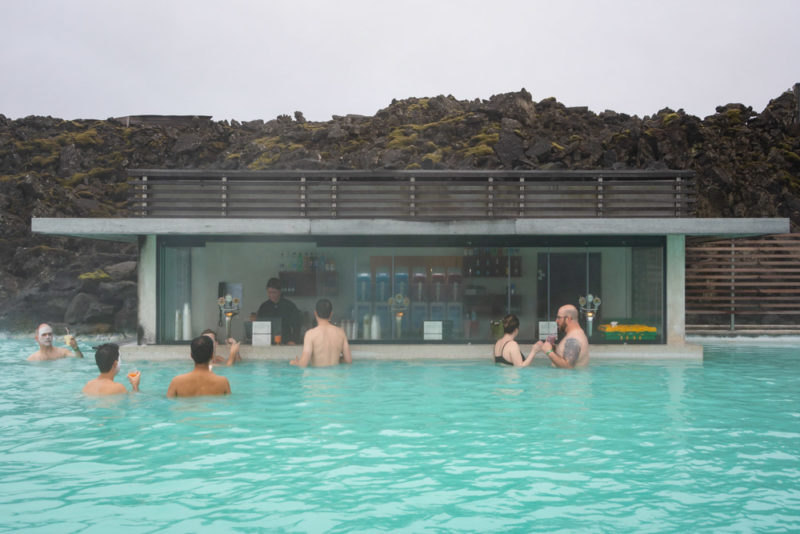
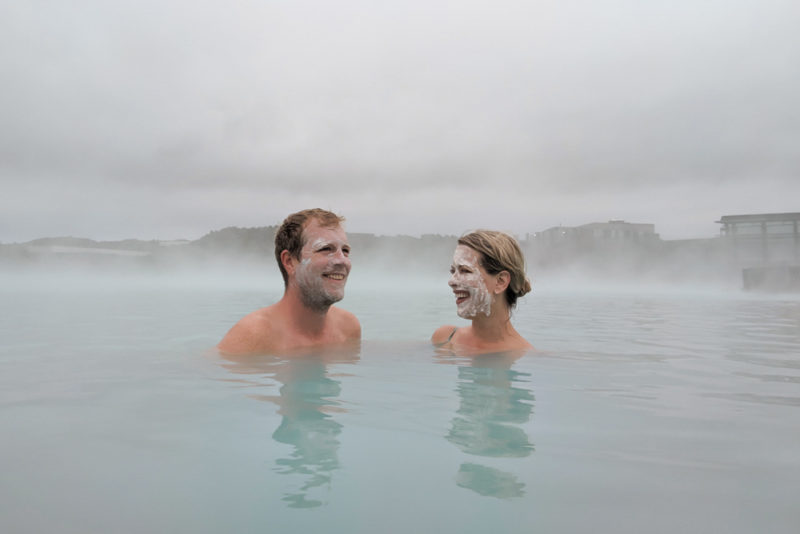
But the most famous geothermal bathing area is the Blue Lagoon, which you’ll find is rather conveniently located next to Iceland’s international airport. The Blue Lagoon is a beautiful area of geothermally heated water and mineral-rich mud that’s perfect for a spa day. You can soak in the outdoor pool or enjoy a rejuvenating massage and a cold Icelandic beer.
The Blue Lagoon can get busy. After all, it’s right next to the airport, so if you’re looking for a more natural or quieter hot spring experience, we recommend heading to Landmannalaugar in the highlands or up north to Lake Myvatn.
There you have it! The 15 best things to do in Iceland. What’s your favorite thing to do in the Land of Fire and Ice?
Planning a trip to Iceland? Check out our favorite books and travel guides!
SHARE THIS ON PINTEREST
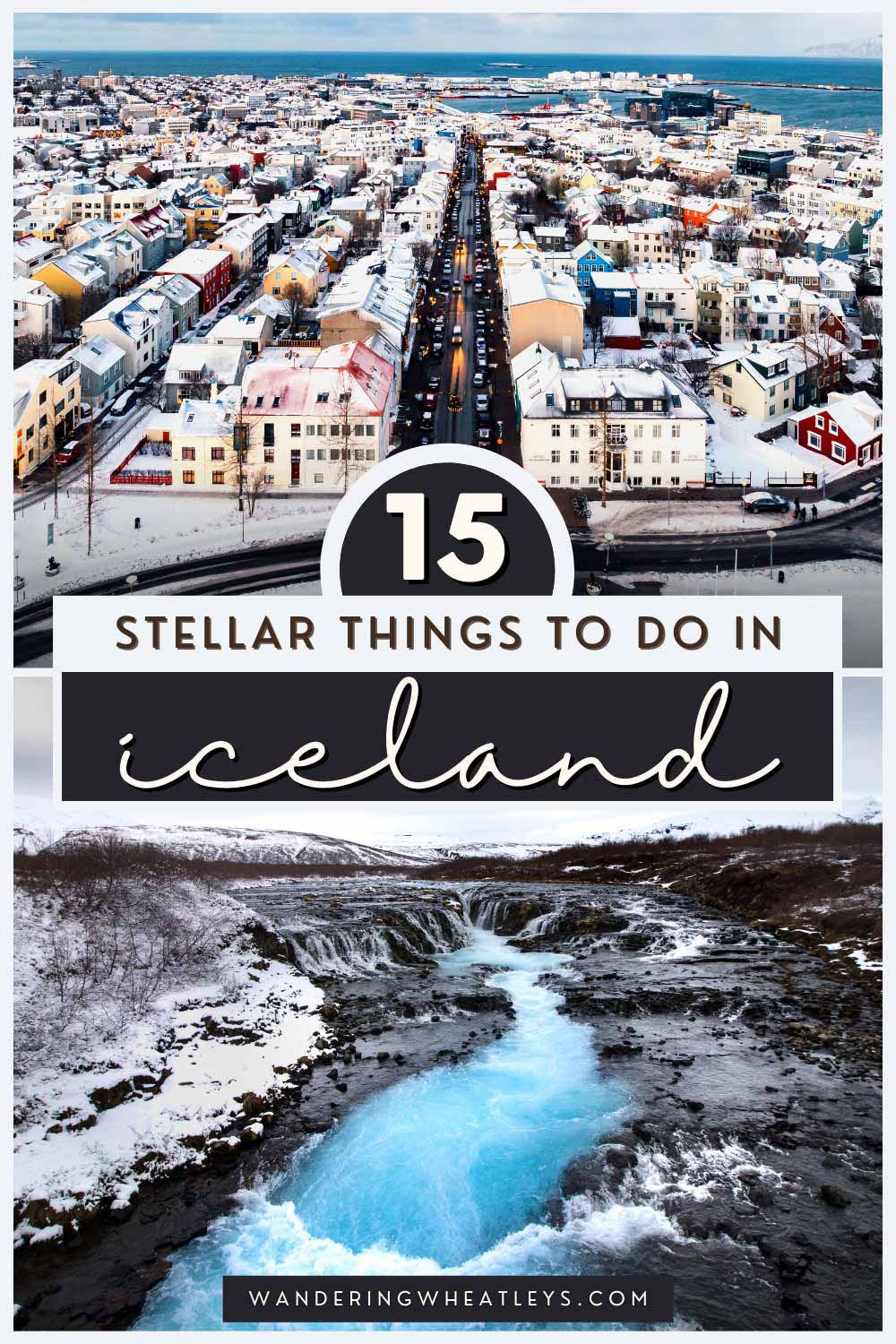
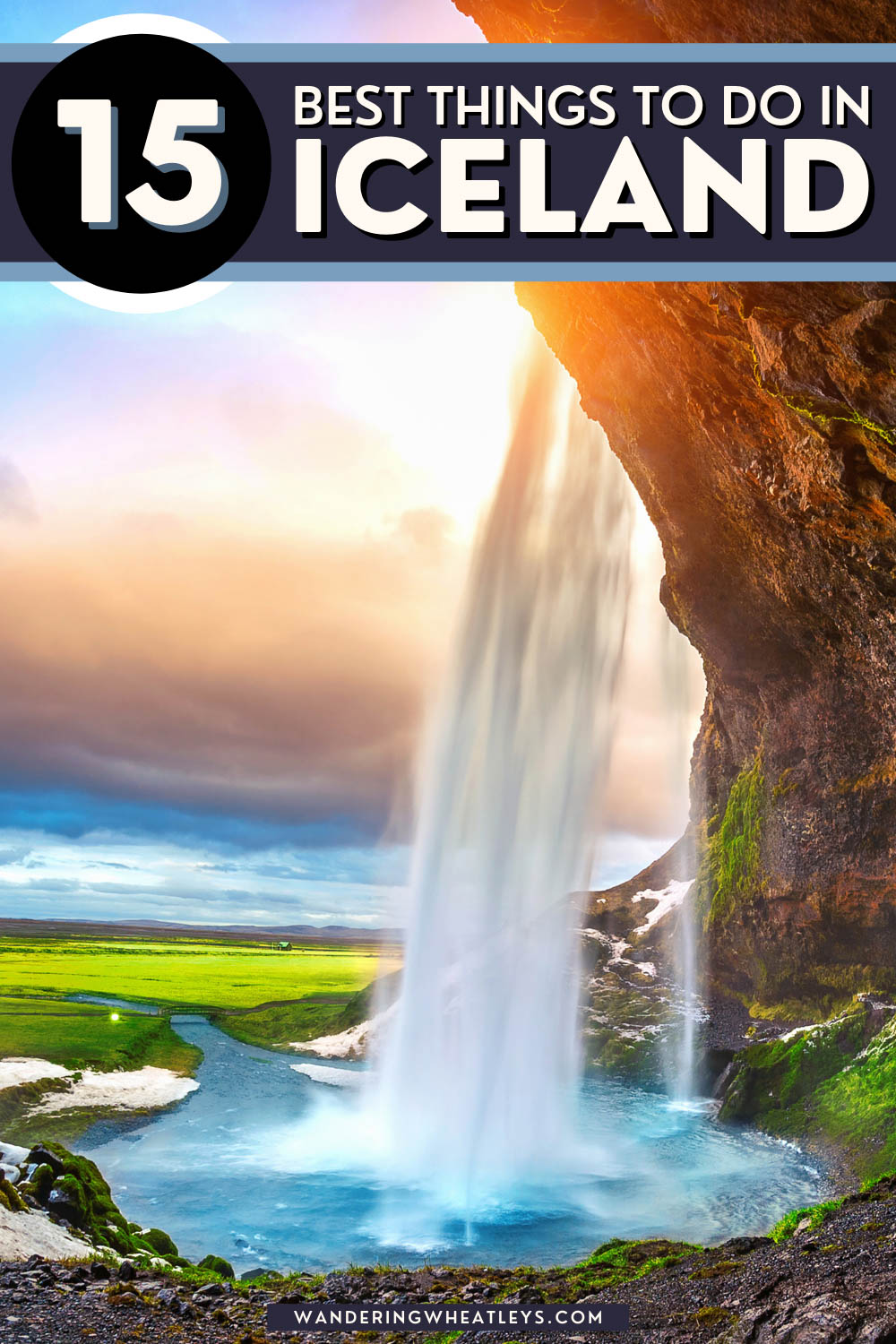
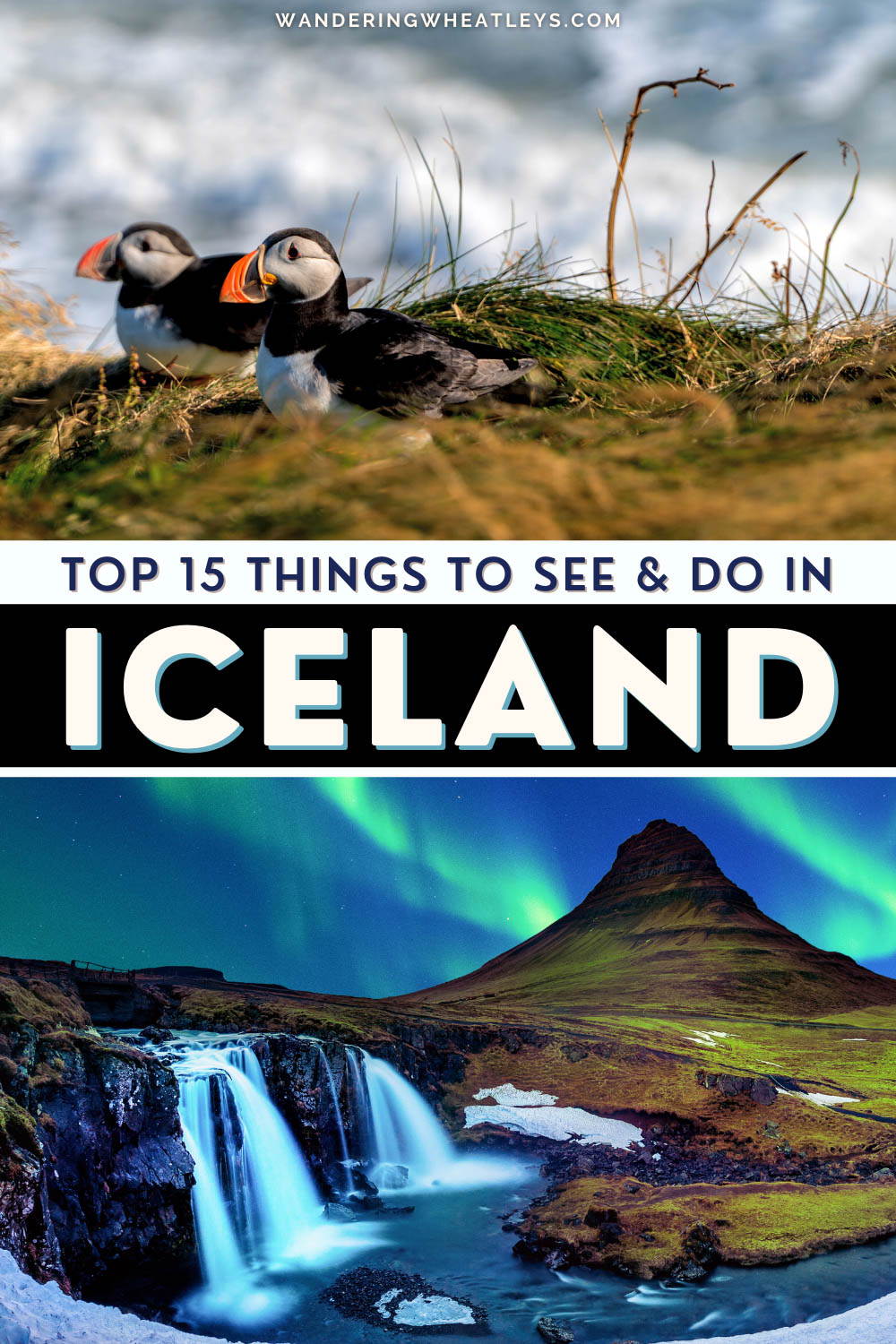
Frequently Asked Questions
If you love an exciting road trip, then you’ve come to the right country! Iceland is made for road tripping, and with so much distance to travel and remoteness to explore, you better buckle up and get your car rental booked. Outside of Reykjavik, a vehicle is essential for getting around, so we recommend planning a full-on road trip itinerary to make the most of your time in Iceland. The most iconic road trip route is simply known as Route 1, or the Ring Road, and it’s one of the best things to do in Iceland.
In Iceland, you can snorkel between tectonic plates! This is one of the most unique things to do in Iceland because there’s almost nowhere else in the world where this can be done. Iceland is caught between the North American and European tectonic plates, and the two plates are slowly separating each and every year. This divide can be seen at Thingvellir National Park, where the two plates have created a great rift in the rocks. This rift is known as the Silfra Fissure, and it’s filled with pure Icelandic glacial water.
Riding a boat through a glacial lagoon is one of the coolest things to do in Iceland. We think it’s an experience that should be at the top of everyone’s Iceland bucket list! You can make this unique experience a reality by visiting Iceland’s east coast, where you’ll find the otherworldly sight of Jokulsarlon. In this glacial lagoon, you can see large chunks of ice split off from the Vatnajokull Glacier and then journey downriver toward the Atlantic Ocean
If you’re visiting Iceland in the winter, you’ll have a huge chance of seeing the Northern Lights! This natural light phenomenon is at the very top of many travel bucket lists, and Iceland is one of the best places in the world to tick it off. You can maximize your chance of seeing the Northern Lights by visiting Iceland in the winter. Although you may see them anytime between September and March if the conditions are just right.
Iceland is a land of phenomena, and one of the most unique experiences to enjoy is the Midnight Sun! Iceland’s summers are outrageously short, but as with everything in Iceland, the seasons are extreme. During the height of summer, the sun rarely sets, and you can stand under the Midnight Sun in June, July, and August.
Iceland has a unique culinary scene. While you’re busy exploring waterfalls and glaciers, take the time to try a few of the local dishes. As you might expect from a land covered in ice, Icelandic cuisine revolves around meat and fish. Slow roasted lamb and hearty lamb soup are two Icelandic favorite, while you’ll find cod, halibut, monkfish, and many more fish species on menus across the country.

